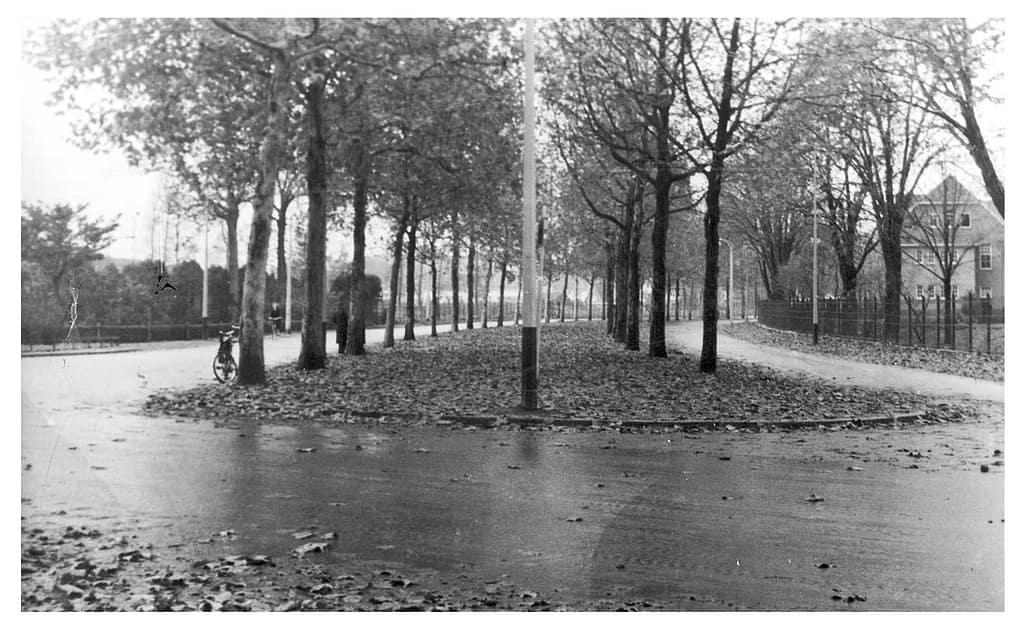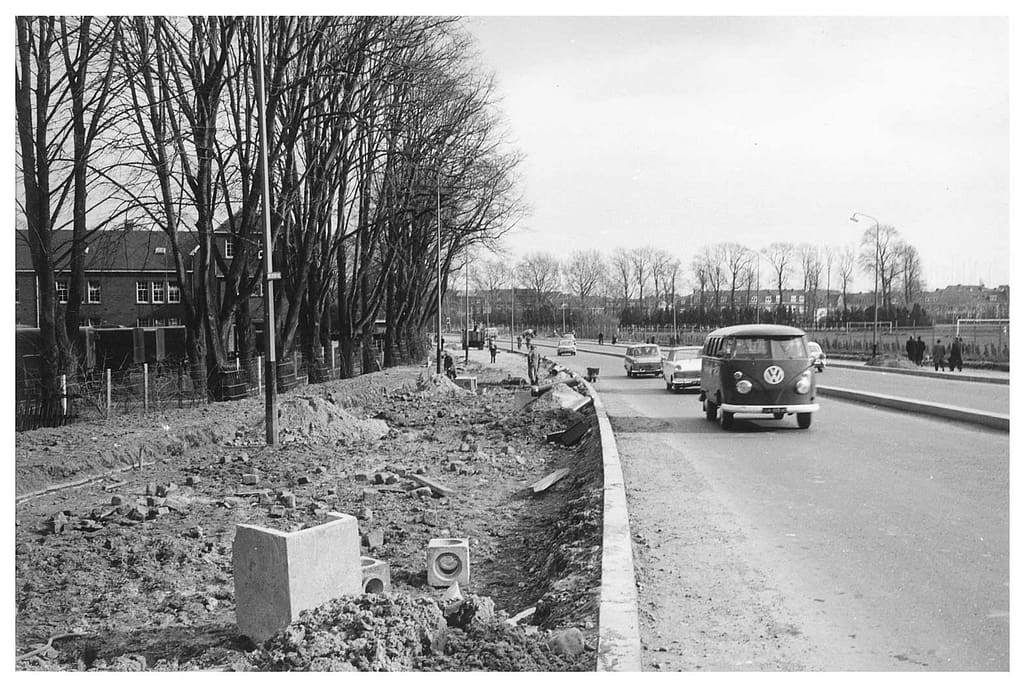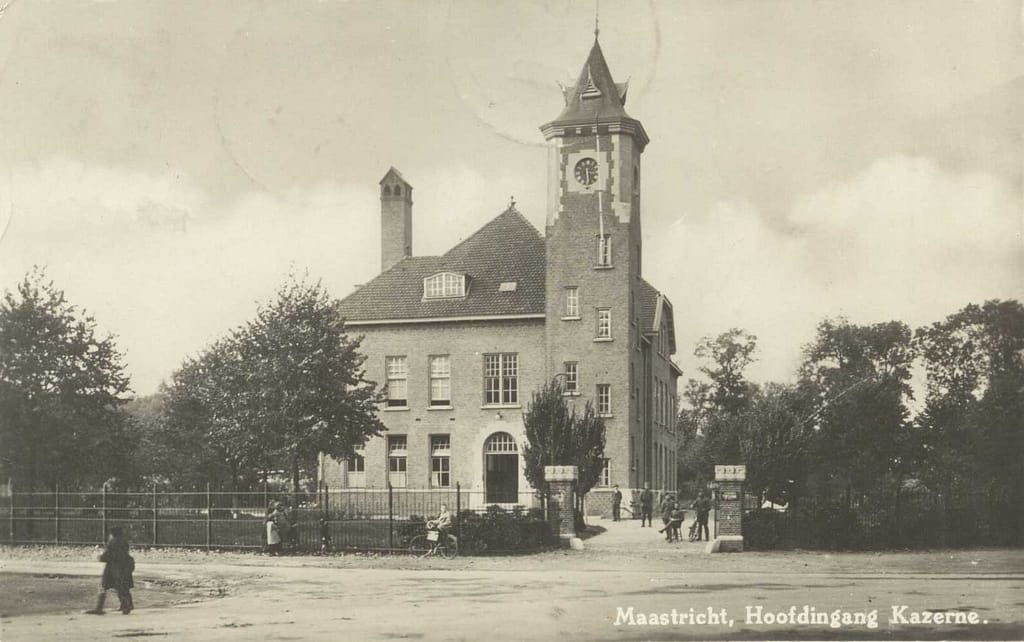History of Tapijn B4 Gates and fencing
Explanation
Gates and fencing
There is a high fence around the barracks. The fence dates from the early stages of the construction of the barracks between 1916 and 1919. There are three gates in the fence, each with two pylons. They are located at the original entrance on the corner of Sint-Hubertuslaan and Prins Bisschopssingel, along Prins Bisschopsingel in the middle of the parade ground, and on the north side. This third gate on the north side was specifically intended for the hospital.
Until the construction of the Kennedy bridge, the Prins Bisschopsingel is a quiet avenue with an almost park-like appearance. Photo: RHCL.

When the Kennedy Bridge was opened in 1967, the intensity of traffic on the Prins Bisschopsingel increased. Photo: RHCL.

Due to the increased traffic on the Prins Bisschopsingel, in 1967 the main entrance to the barracks was moved to the Hubertuslaan. Photo: Jos Notermans.




